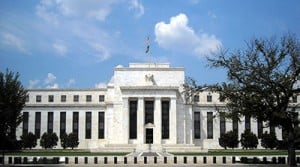American employers increased headcount by 211,000 in November. The healthy showing all but guarantees a December rate hike from the U.S. Federal Reserve.
The U.S. unemployment rate remained steady at 5% last month, a level deemed by many as full employment. Economists were looking for a gain of 200,000 jobs with no change in the unemployment rate. October and September payroll performances were revised upwards by a collective 35,000.
Wages in November rose by 0.2%. That left the 12-month change in average hourly earnings at 2.3%. Stagnant wage growth has been a major concern for the Federal Reserve. But October's strong 0.4% increase in average hourly earnings pushed the 12-month gain to 2.5% and reversed a downward trend.
 The decent showing over the past three months paints a picture of a robust job landscape in the United States. It also provides the Federal Reserve with the evidence it needs to raise interest rates for the first time in nearly a decade later this month.
The decent showing over the past three months paints a picture of a robust job landscape in the United States. It also provides the Federal Reserve with the evidence it needs to raise interest rates for the first time in nearly a decade later this month.
"Short of geopolitical events that are larger than anything we've seen lately, this is a done deal," Diane Swonk, chief economist at Mesirow Financial, told CNBC.
Many others agree that a December rate hike is coming.
"The November report ensures that the Fed will move at the December meeting," economist Douglas Holtz-Eakin told the LA Times.
Earlier this week, Fed Chairwoman Janet Yellen and other key Fed officials suggested a December rate hike is looming.
Raising rates would be a "testament, also, to how far our economy has come in recovering from the effects of the financial crisis and the Great Recession," Yellen said Wednesday at the Economic Club of Washington.
Yellen also said that committee members have said they'll raise its benchmark rate when they've seen "some further improvement in the labor market and were reasonably confident that inflation" would move up to the Fed's annual target over the medium term.
Yellen and her team saw that Friday in the Labor Department's November jobs report.
"It is a day that I expect we all are looking forward to," Yellen added.
While a December rate hike looks like a done deal, what happens next is a bigger question for investors...
[mmpazkzone name="in-story" network="9794" site="307044" id="137008" type="4"]
What's Next After a December Rate Hike
As of Thursday, market participants put the likelihood of a December rate hike at 79%, according to CME Group data.
With a December rate hike looking like a done deal now, attention turns to the pace of future tightening.
Future increases depend on progress made toward the Fed's 2% inflation target. That hinges on how quickly wage pressure escalates as the job market strengthens.
Yellen maintains that rate increases will be "gradual" over the next few years. The Fed chief has also indicated that the benchmark rate will hold below normal even after the labor market and inflation have fully met the central bank's targets.
Fed policymakers' projections indicate they're likely to lift rates by 0.25% four times a year, or every other meeting. Still, Yellen said the Fed has no plans "to proceed over time in such a mechanical, calendar-based way."
The Fed moves will continue to be data dependent. So investors will want to continue keeping a close eye on jobs reports, inflation, and wage growth.
Stay informed on what's going on in the markets by following us on Twitter @moneymorning or liking us on Facebook.
The Markets Will Crash Again: The cracks are already showing. But the impending collapse is also an opportunity. By understanding these five "Super Crash" inevitabilities and making key adjustments, investors can protect their portfolios from the downside while positioning for the upside. This is your last chance to act before it's too late...
Related Articles:
- Bloomberg: U.S. Index Futures Erase Gain as Oil Slump Overshadows Job Data
- The Wall Street Journal: U.S. Employers Add 211,000 Jobs in November
- Los Angeles Times: U.S. Economy Creates 211,000 Jobs in November, Making Fed Rate Hike Likely


